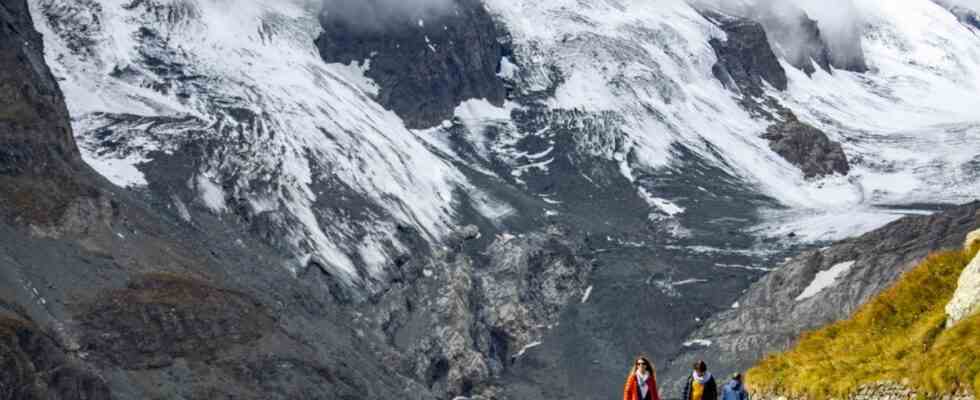The longest glacier in the Eastern Alps, the Pasterze, is apparently facing a fateful summer. The lower part of the largest Austrian glacier is only connected to the upper one by a very thin strip of ice, said glaciologist Andrea Fischer from the Austrian Academy of Sciences recently on ORF. This thin strip rests on very dark rock that is warmed by the sun. Should it melt this summer, the glacier would split in two, disrupting the supply of ice to the lower section. The consequence would be that the glacier tongue would melt in the next ten to 20 years, according to Fischer.
The past winter half-year was unusual, write Andrea Fischer and Hans Wiesenegger, heads of the Hydrographic Service of the State of Salzburg, in their “glacier diary“. October was very dry, and the first significant precipitation came only at the end of November. However, the dry snow that fell could not connect to the subsoil.
The glacier shrank by almost 43 meters last year
Since strong winds blew in many areas with the snowfall, the snow was blown away by the glacial ice. According to the researchers, the glacier was “swept clean” by the wind, particularly in exposed areas. Only in April was the warmer snowfall able to combine with the ice. The amount of precipitation was also very low in this winter half-year.
This course is problematic for the glaciers because they usually build up a thick layer of snow in winter. This layer of snow reflects the sun’s rays better than the dark glacial ice, protecting it from high temperatures. However, Fischer and Wiesenegger also state that a lot depends on the course of the summer half-year. “Now we’re only at the end of the first half, anything is still possible.”
Things are also not looking good for the Pasterze as a whole. The current glacier report of the Austrian Alpine Association shows that the Pasterze has decreased in length by 42.7 meters compared to the measurement period in the previous year, only the Schlatenkees in the Venice Group lost even more. According to the Central Institute for Meteorology and Geodynamics (ZAMG), the ice thickness in the lowest part of the Pasterze decreases by around nine meters per year, in the debris-covered part it is 3.75 meters per year.
By the year 2050 this is what Swiss climate researchers estimated a few years ago, the Alpine glaciers are likely to lose around half of their volume from 2017, regardless of how climate protection proceeds by then. In the second half of the century, however, it will be decisive how decisively mankind acts or not: If we succeed in limiting warming to a maximum of two degrees, at least a third of the current ice volume could remain. If warming continues unabated, the Alps could be nearly ice-free, with only a few patches of ice at very high altitudes.

